
The stories of the Vikings have been handed down from generation to generation for centuries. These ancient people of Scandinavia didn't use parchment, and there are very few written accounts of these tales. The earliest stories of Norse Mythology, the religion originally practiced by the Vikings, were depicted on jewelry, articles of clothing and even weapons, or passed on by word-of-mouth.
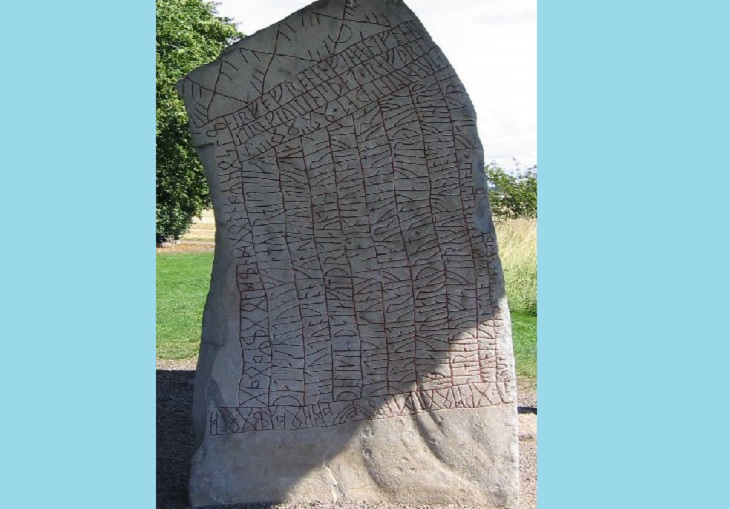
(By Wiglaf - Tale of Norse Mythology inscribed on Runes - Wikimedia Commons)
Poets, shamans and other story-tellers of the Viking Era would recite the legends of the great Gods and Goddesses of Norse Mythology to people all around and during grand feasts to captivate and stun massive audiences. Many of these myths have been the inspiration for contemporary creations such as J.R.R Tolkien’s Lord of the Rings, characters in J.K Rowling's Harry Potter and even a Marvel Comics storyline that first appeared in the 1960s, that has since gained much popularity.
These epic events from the Scandinavian region can get strange and surprising, but with powerful tricksters like Loki and fearsome warriors like Thor, what else can you expect?
1. The Mead of Poetry
This first story is the tale of a lesser-known God from the Norse Mythos but by no means a lesser one. The story of Kvasir begins with a war between the Gods. It was one among many, but mercifully this one ended in a truce.
To celebrate the end of the war, the Gods from both sides came together to make an intoxicating drink using an ancient process. Berries were chewed by all involved, then spat into a large vat and left to ferment.
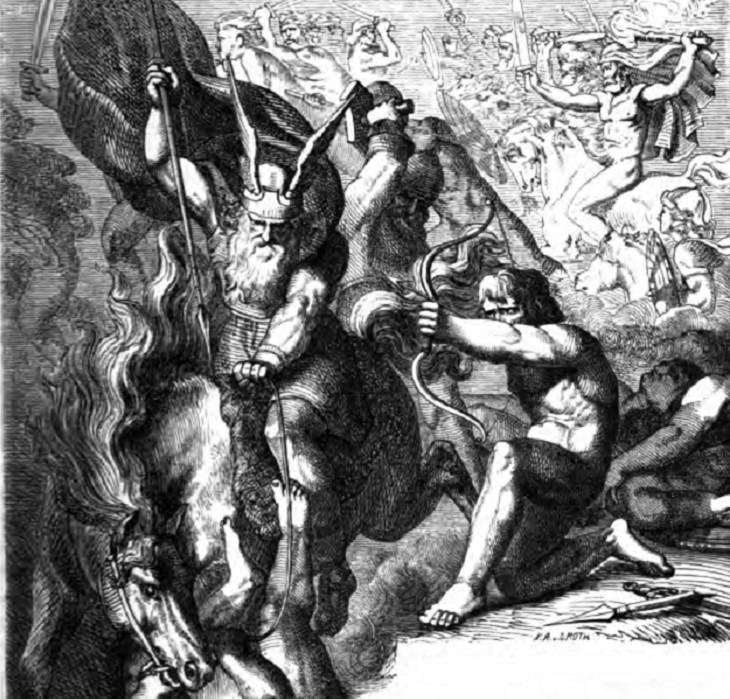
(By Carl Ehrenberg - The Aesir-Vanir War - Wikimedia Commons)
However, on this specific occasion, something went a little differently and instead of an alcoholic beverage, the fermented mush took the form of a person. Such was the odd birth of the God Kvasir, whose name literally translates to “fermented berry juice”.
This alcoholic God grew to be brilliant, and the wisest of all the gods and men alike. He enjoyed imparting his knowledge on all those whose paths he crossed and sharing his many ballads and poems. One day he found himself in the home of two dwarves, Fjalar and Galar (which mean the ‘Deceiver’ and the ‘Screamer‘ respectively).
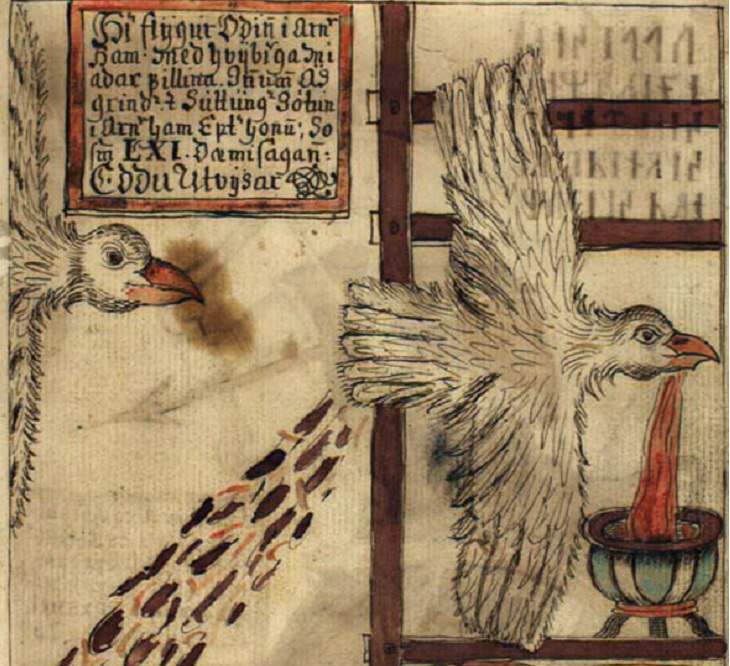
(By Ólafur Brynjúlfsson - Depicts Odin taking the form of an eagle to steal the Mead of Poetry from the mountain of a Giant - Wikimedia Commons)
No sooner had he begun to dispense one of his many stories that the dwarves struck him down and took his life. They then drained his blood into containers and used it to brew a rather disturbing mead. Legend has it, anyone who drank this mead would immediately be endowed with a new-found skill in poetry. This mead is therefore believed to responsible for the birth of all poetry, which, I suppose, adds a certain level of beauty to this God’s gruesome ending.
2. The Creation of the World
Along the lines of gruesome endings leading to beautiful beginnings, here’s another story for the ages. Much like in Christianity, Greek Mythology and other religions, beliefs, and philosophies, the Vikings had their own theory on how Planet Earth was brought to life.
This story starts with Ymir, the first being from whom all creations in Norse Mythology sprang. Ymir was a hermaphroditic Giant, created by a swirl of fire and ice and then raised by Auðumbla, the cow.
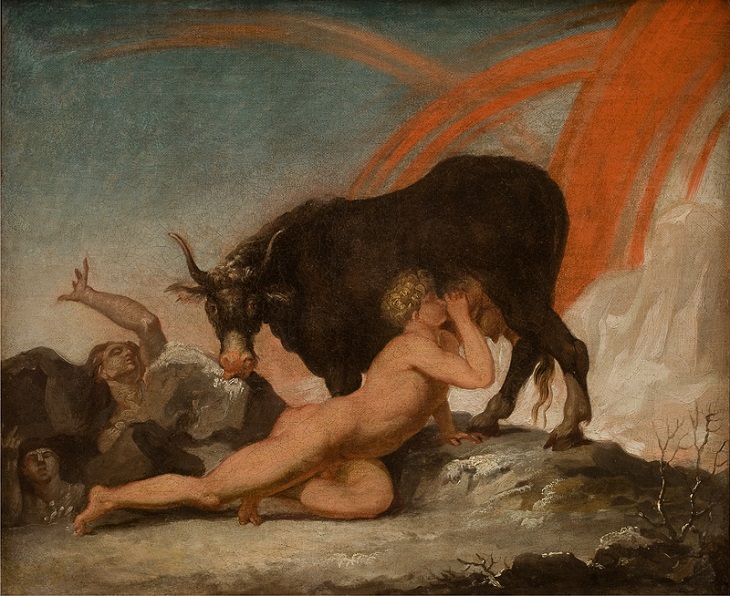
(By Nicolai Abildgaard - Ymir nursing on the teat of Auðumbla - Wikimedia Commons)
One day, as he slept, his body immaculately conceived several other giants who then burst forth spontaneously from his legs and his armpit, for whatever reason. One of these giants would later give birth to Odin, the ruler of Asgard and Valhalla and amongst the most powerful of the Norse Gods, as well as his two brothers Ve and Vili.
Both Ymir and Ginnungagap, the void from where the great Giant first rose, were meant to signify the chaotic nature of the universe and the limitless possibilities that could spring from it. In keeping with that notion and the morbidity of Norse legends, Odin and his brothers tore apart the body of Ymir, and from his corpse, the world we know was created.
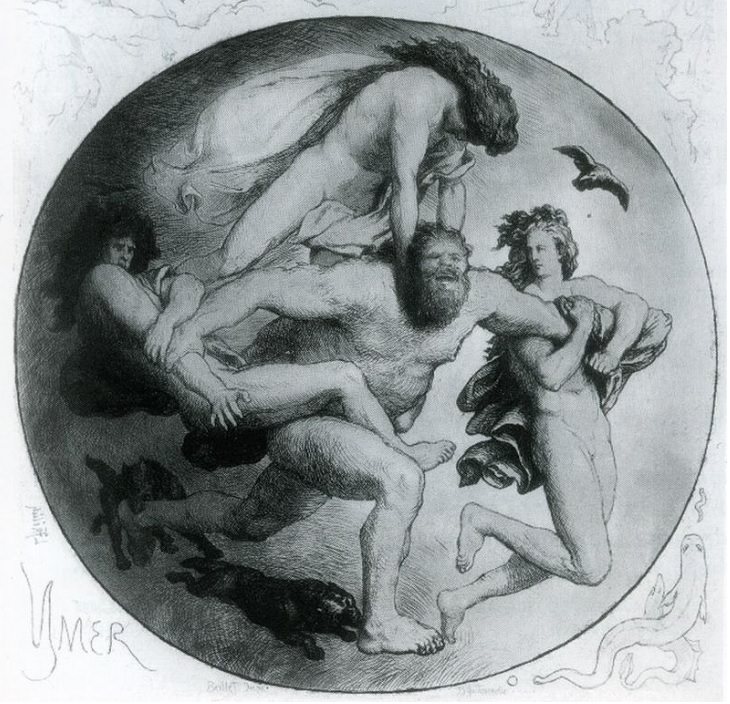
(By Lorenz Frølich - Ymir as he is killed by Odin and his brothers - Wikimedia Commons)
Each part of the body was used to sculpt a different portion of the universe, with trees coming to life from his hair, clouds from his brain and the sky from his skull. His bones were used to form the mountains, and the ground beneath our feet was his flesh. It was finally his blood and sweat (depending on the version of the story you’re reading), that pooled together to form the oceans.
3. The Fortification of Asgard
Following the horrific murder of Ymir and the beautiful birth of Earth, Odin and the rest of the Norse Gods living in Asgard had now made enemies of the remaining Giants. They knew it wouldn’t be long before the giants came stomping into their kingdom seeking vengeance for their fallen brother.
A decision was made by the Gods jointly to have a wall built around Asgard to keep the people of this magical kingdom safe from the Giants. But they knew they needed it fast, as the giants were likely to be advancing.
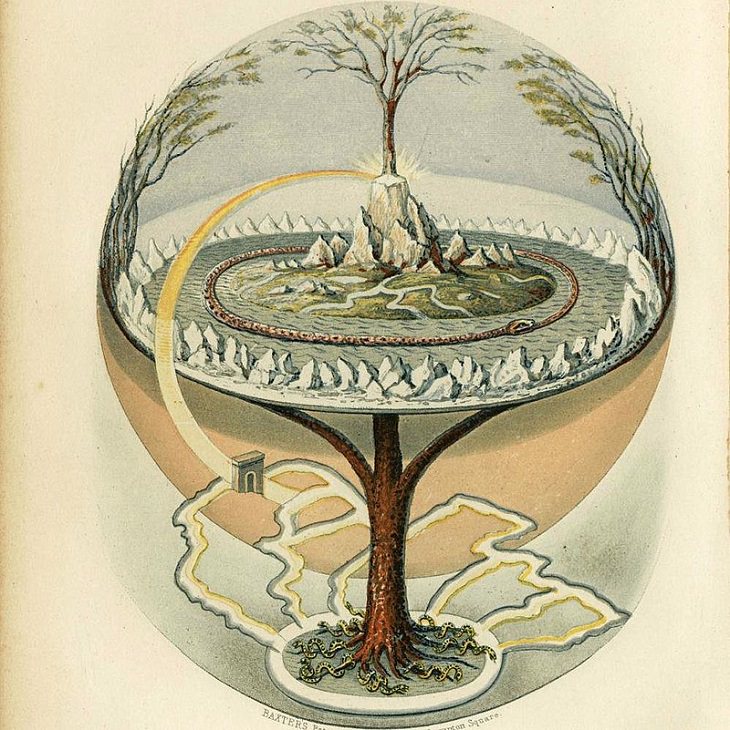
(By Oluf Bagge - Yggdrasil, the Tree that Connects the Nine Worlds, protected by the Snake - Wikimedia Commons)
A stonemason arrived at the gates of Asgard shortly thereafter, with a promise to complete the wall in what seemed to be an unbelievably short span of time. However, he asked for a hefty payment in return: for the Norse Goddess Freyja to be handed over to him to become his wife. Some versions of the story also say that he was promised ownership over the sun and moon as well.
While Freyja did have a reputation as something of a “party girl” (a fact alluded to on numerous occasions by Loki, the shapeshifting troublemaker), the Norse gods didn’t like to part with their own, particularly powerful ones like Freyja.

(By Robert Engels - The unnamed Stone Mason and Svadilfari - Wikimedia Commons)
Nonetheless, Loki convinced the Gods to make a deal with the mason, with a condition that only if he finished the wall within a specified time, he would be granted his rewards in full, believing there was no way the mason would be able to complete it on time.
Little did they know, this stonemason had a special stallion named Svadilfari (“Unlucky Traveler”), who was able to move heavy items at a quick pace. With the aid of this stallion, the wall was likely to be up in no time. The Gods assigned Loki, whom they blamed for this outcome, with the task of ensuring that the mason would not complete the wall in time.
As it turned out, Loki had taken a real liking to the stallion, Svadilfari. So he figured the best way to keep the wall from being built was to distract the horse, and in a rather… unconventional way. Loki took the form of a very attractive mare and led Svadilfari away.
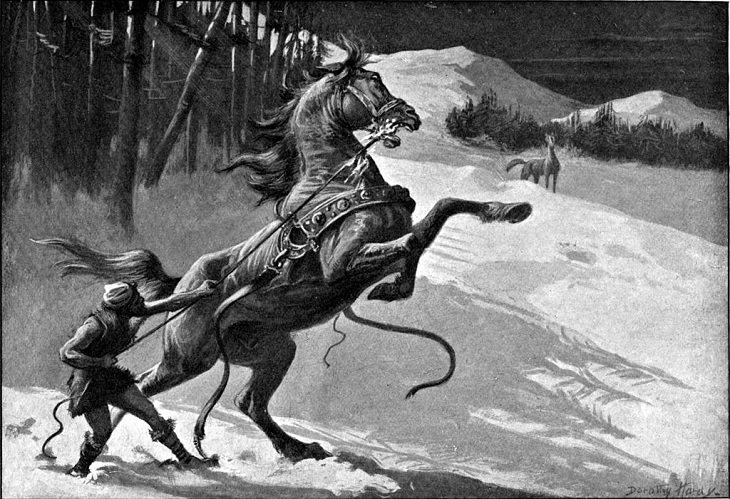
(By Dorothy Hardy - Svadilfari is drawn away by Loki in the form of a mare - Wikimedia Commons)
With his magical horse now gone, the mason knew he would not be able to finish the wall, which the Gods also realized immediately thereafter. It was also discovered by this time that the mason was actually a giant, hiding in plain sight. He was accordingly rewarded with death, brought to him by Mjolnir, the all-powerful hammer of Thor.
In the meantime, while the giant mason was meeting his doom, life was being made in a forest nearby. The stallion, Svadilfari managed to catch up with the then-mare Loki. Loki’s fondness for the horse was undeniable, and shortly after their interaction, Loki gave birth to Sleipnir, the eight-legged horse that eventually became the noble steed of Odin.
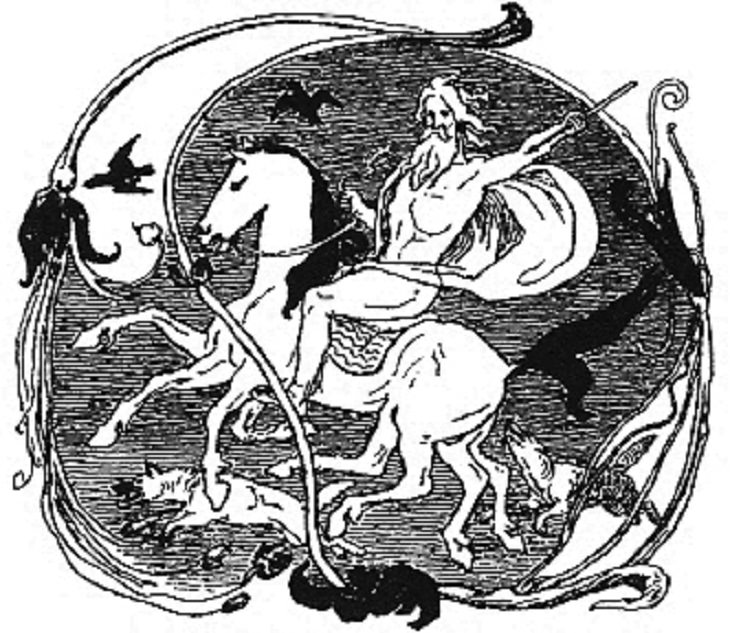
(By Lorenz Frølich - Odin and Sleipnir - Wikimedia Commons)
4. The Wedding of Thor
There was always trouble brewing in the then Nordic realm, so when giants weren’t trying to storm the gates of Asgard, they were trying to steal magical artifacts. This story revolves around Thor and his hammer, which was one day stolen by the giant Thrym.
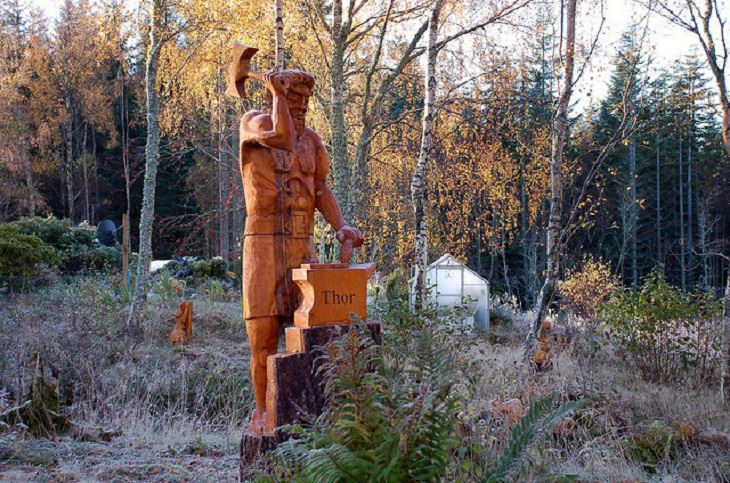
(By Jim Barton - Sculpture of Thor and his Hammer - Wikimedia Commons)
Thrym hid Mjolnir, Thor’s hammer, deep under the Earth and stated that the hammer would not be returned to Thor until and unless he was given Freyja to marry. Freyja was not only an accomplished Seidr practitioner, one of the most organized types of magic in the Norse realm, but also the ruler of Folkvang, a realm of the afterlife that was similar to Valhalla. It was an added bonus that she was known for her beauty, which would explain the frequent interest of men, giants, gods, and dwarves in wedding (and bedding) her.
The Norse Gods hadn’t gone through all the trouble to save her from the stonemason just to hand her over to Thrym. Some variations of the story claim that Thor and Loki did approach Freyja with the giant's proposition, which she proceeded to instantaneously reject. Whichever version of the story you’re enjoying, Freyja wasn’t having any of it.

(By Nils Blommér - Freyja, Wikimedia Commons)
Regardless of Freyja’s lack of cooperation, Thrym was threatening to destroy the Gods if she wasn’t given to him instantly. Without the wall to protect them, Mjolnir had been the Norse Gods' last line of defense. So, on the suggestion of Heimdall, the God that watches over the entrance to Asgard, Thor did what he was required to do after his initial protests were ignored.
He wrapped himself head to toe in the bridal dress meant for Freyja and made his way to the wedding hall of Thrym in the land of the giants, Jotunheim. After reaching it, he convincingly portrayed the blushing bride (with the bemused assistance of his “handmaiden”, Loki) until the love-struck giant brought forth Mjolnir to bless the wedding ceremony, as was customary.

(By Elmer Boyd Smith - Thor in his Bridal Dress with Loki watching from behind the curtain - Wikimedia Commons)
As soon as Thor saw his beloved hammer, his veil came down and so did Mjolnir… straight onto Thrym’s head, ending the entire ordeal.
5. The Death of Baldur
This tale is yet another one that gives you a little insight into all the trouble that Loki goes out of his way to cause. It begins with Baldur, the other son of Odin and Frigg, and brother of Thor. While Thor was a fearsome and brave warrior, Baldur was well-loved for his grace and charm and was believed to give off a unique light.
One day, Baldur began having gruesome dreams that he and his mother Frigg believed to be predictions of his death. In an attempt to avoid losing her wonderful son, Frigg went to a variety of people and inanimate objects in the world, from metals to sharp items and even trees, and secured oaths from each of them that they would not at any point cause harm of any kind to her son.

(By Carl Emil Doepler - Frigg with Ostara, Goddess of the Spring - Wikimedia Commons)
In the Nordic realm, when an oath had been made, it had to be carried through. With the oaths taken in Baldur’s favor, there were no weapons in the world that could harm him, or so it seemed. The Gods would amuse themselves by using Baldur for target practice. They would throw a variety of weapons like spears, knives, and axes at him and watch as they soared over and around his body.
While the other Gods were enjoying Baldur’s invincibility, Loki saw it as another opportunity to stir things up. After a few inquiries with Frigg about the oaths she had collected, he discovered that she had taken no oath from mistletoe. Her belief was that mistletoe would not be an item that could bring him harm. Perhaps not under normal circumstances, but with Loki around, all bets were off.
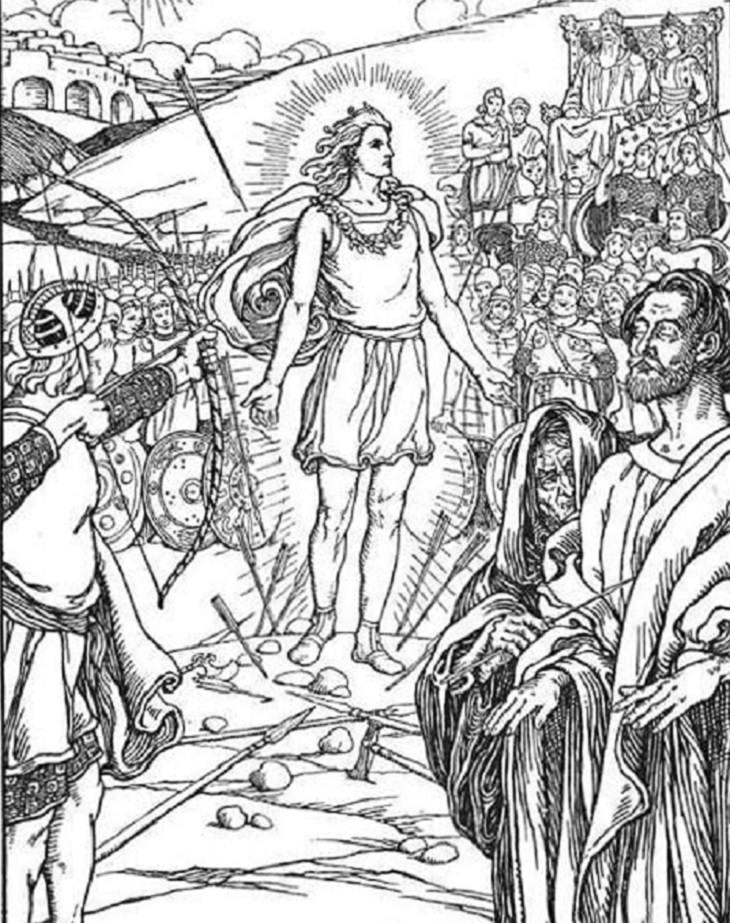
(By Elmer Boyd Smith - Baldur with the Other Gods as arrows fly over his head - Wikimedia Commons)
Loki immediately fashioned a spear made almost entirely from mistletoe, Baldur’s one weakness. Naturally, he would never use the spear himself, so instead he tricked a fellow God who was blind into throwing the spear at Baldur. Unaware that the spear was made from mistletoe, Baldur made no attempt to avoid the projectile and was fatally struck by it.
Though Baldur passed away, his story, and Loki’s mischief, didn’t end there. Another son of Odin, Hermod, riding Sleipnir, was sent by the many Gods who adored Baldur to the underworld to retrieve his soul. He spoke to Hel, the daughter of Loki and ruler of the Underworld, and told her of the love the whole world had for Baldur. She then promised to release the spirit of Baldur, but if, and only if everything in the world wept for his return, as Hermod had claimed.
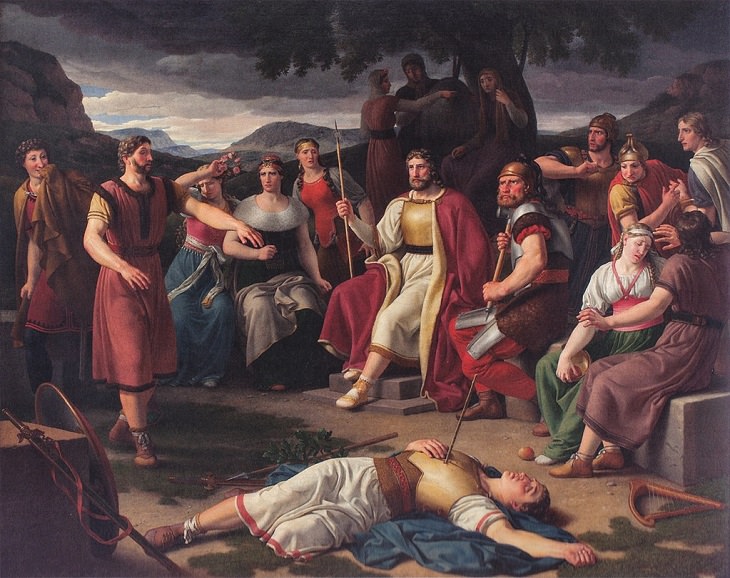
(By Christoffer Wilhelm Eckersberg - Baldur lies dead after being struck by the spear made by Loki, Wikimedia Commons)
Shockingly enough, almost everything in this world, wanting the return of Baldur, wept for him. The only exception was a Giantess that many stories have claimed was most likely Loki in disguise. Thanks to this single act of coldness, Baldur was left to remain in the underworld forever. And Loki? He got his just rewards. One of his sons was turned into a wolf, who then killed another son. With the dead son's entrails, Loki was bound to a stone, and they placed a venomous snake over his face to drip poison on his face for eternity.
6. The God of Bacon
Here’s a God all meat-lovers will appreciate, but his story is sadly rather short and cruel. Sæhrímnir was a magical boar who had the gifts of endless life and absolute deliciousness. This beautiful boar is none other than the Norse God of eternal bacon.
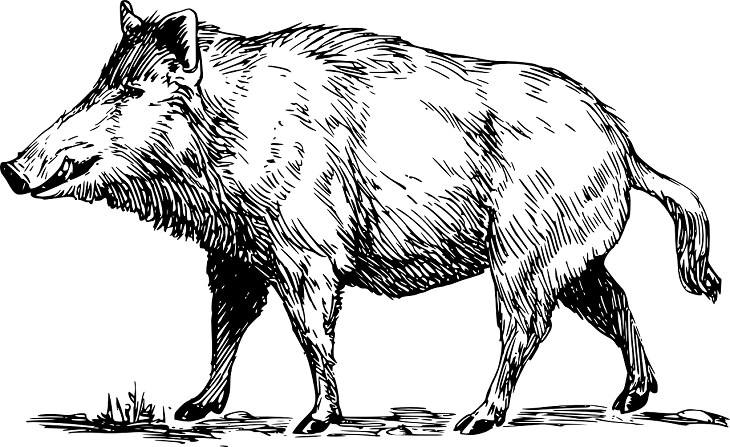
While this beast’s existence might sound like a blessing, it was, unfortunately, a curse, but only for the boar himself. Every other Norse God got to enjoy the fruits of Sæhrímnir’s flesh every single day. Literally.
Legend has it, this magical boar was kept in a pig pen nearby the hall of the Norse Gods in Valhalla, where the daily feasts would occur. Every day and every night, Sæhrímnir would be dragged into the kitchen by Andhrímnir, the chef of the Norse Gods. The boar was left to sear in a pot of boiling water, while the Chef sliced and then distributed Sæhrímnir flesh as it cooked.
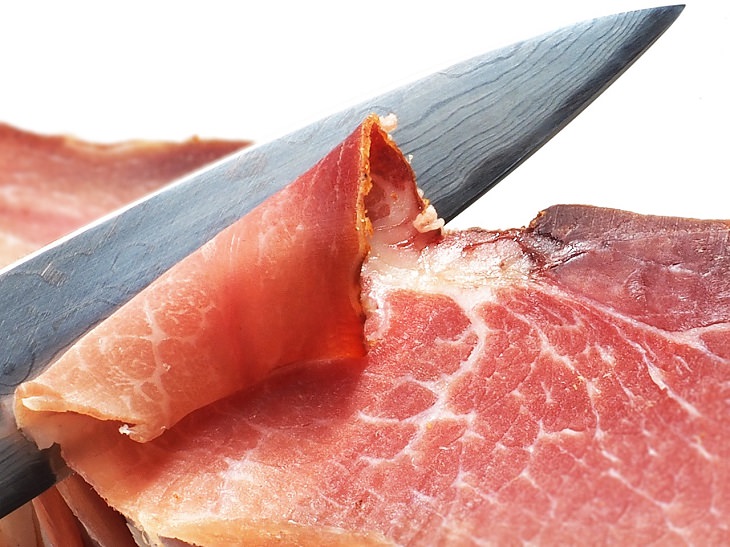
Because Sæhrímnir flesh was used to feed every single soul in Valhalla, a land of fallen warriors who really know how to feast, his torture was unending. Not only was his flesh claimed to be the most delicious in the realm, but it was also self-healing and repairing, growing back almost immediately after being cut off.
The boar was only given a reprieve in the night when he returned to his pen and the remainder of his flesh would grow back. But any peace he enjoyed was short-lived as the next day, he knew the process would start all over again. After all, there were hungry mouths to feed. Poor, poor Sæhrímnir.
Related Articles:
6 Historical and Heroic Stories From Greek Mythology